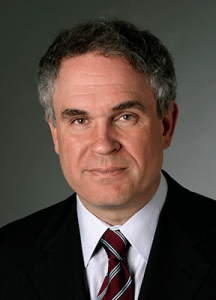
Dr. Glenn Pfeffer
A pioneering new surgical technique using 3-D prints to compare different surgical approaches in the same patient was named one of six “Game Changers” of the year by the American Academy of Orthopaedic Surgeons (AAOS) on March 17. The technique was developed by Dr. Glenn B. Pfeffer, director of the Foot and Ankle Surgery Program at Cedars-Sinai Medical Center, with funding from the Charcot-Marie-Tooth Association (CMTA).
“Ultimately our findings offer hope for better techniques to help patients with Charcot-Marie-Tooth disease live a better quality of life,” Dr. Pfeffer said.
The abstract for the study was one of six selected from more than 900 for the “Game Changers” session at the Academy’s annual meeting. The designation goes to techniques most likely to change the practice in the next three years. The study, “The Use of 3D Prints to Compare the Efficacy of Three Different Calcaneal Osteotomies for the Correction of Heel Varus,” was written by Dr. Pfeffer, Max P. Michalski, Tina Basak, and Joseph Giaconi. Their technique has application for other types of deformity correction research in orthopaedics.
The study focused on the deformity of the heel bone, which is frequently twisted inward in patients with Charcot-Marie-Tooth disease, causing them to have an extremely unstable gait. Researchers began with a CAT scan of a patient who was unable to walk even a few feet without assistance because of foot deformity caused by CMT. They then used a 3D copier to print 18 identical models of the malaligned foot, so they could compare the correction obtained by three different operations. A specialized jig accurate to within 1/10,000th of an inch enabled highly precise and reproducible cuts in the models, which replicated the procedures done in the operating room. After the bone cuts, a repeat CAT scan was performed on each model to measure the correction.
The researchers concluded that none of the uniplanar bone cuts provided adequate correction of the complex three-dimensional heel deformity. The “Z” bone cut provided significantly more correction in the coronal plane (varus/valgus), with no significant shortening of the calcaneus compared to the “Dwyer” and “Oblique” cuts. The Z cut however, produced much less correction than anticipated, with only 3 degrees of final heel valgus. None of the osteotomies provided more than 6 mm lateral translation of the tuberosity. The study authors are currently in the second phase of the research to see what type of reconstructive procedure is best. That research should be completed in six months.
One in 2,500 people has the genetic neuromuscular disease CMT, which kills the long nerves to the hands and feet, causing the muscles around them to atrophy. Cavovarus foot deformity is caused by an imbalance in opposing muscles, often resulting in a foot that has a high arch (cavus), clawed toes, a heel that turns inward (varus), and a foot drop.
Pfeffer is the co-director of the Charcot-Marie-Tooth Center of Excellence at Cedars-Sinai Medical Center and co-director of the Cedars-Sinai/USC Glorya Kaufman Dance Medicine Center. He is also a member of the CMTA Advisory Board.





